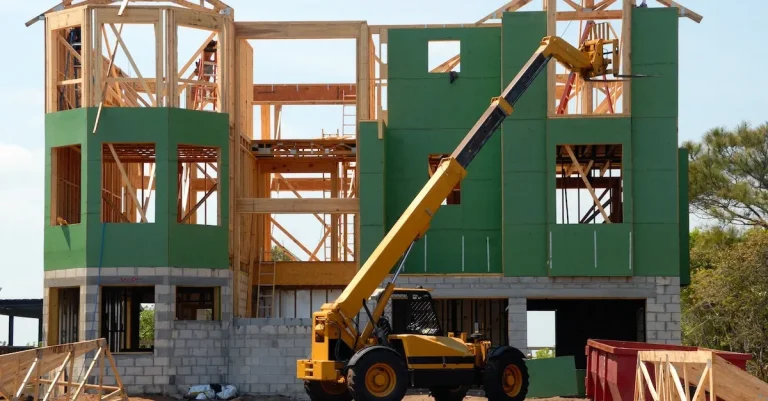Is Colorado A Desert?
With its towering snow-capped peaks, alpine forests, and swift flowing rivers, Colorado may not seem like a desert at first glance. But the Centennial State is home to some surprisingly arid landscapes that share commonalities with desert regions.
If you’re short on time, here’s a quick answer to your question: While Colorado has desert features, it is not considered a true desert due to its high elevation mountain climate and significant annual precipitation in parts of the state.
In this comprehensive guide, we’ll analyze Colorado’s climate, geography, ecosystems and more to determine what desert traits it does exhibit and explain why it ultimately does not qualify as a desert.
Defining the Technical Criteria for a Desert
When it comes to determining whether Colorado can be classified as a desert, it is important to consider the technical criteria that define a desert. These criteria include low annual precipitation thresholds, high temperatures and aridity, as well as sparse vegetation and wildlife.
Low Annual Precipitation Thresholds
One of the key indicators of a desert is the amount of annual precipitation it receives. Deserts are characterized by extremely low levels of rainfall, often falling below a certain threshold. In the case of Colorado, while it may not be considered a classic desert like the Sahara, it does have areas that meet the criteria of low annual precipitation.
For example, regions such as the San Luis Valley and parts of the Western Slope receive less than 15 inches of precipitation per year, which is comparable to some desert regions.
High Temperatures and Aridity
In addition to low rainfall, deserts are also known for their high temperatures and arid conditions. While Colorado does not experience the scorching temperatures of deserts like Death Valley, it does have areas with hot and dry climates.
The eastern plains of Colorado, for instance, can have a semi-arid climate with hot summers and limited rainfall. These conditions are characteristic of desert-like environments.
Sparse Vegetation and Wildlife
Another characteristic of deserts is the presence of sparse vegetation and wildlife. Deserts are often devoid of lush plant life and have adapted to survive in harsh conditions. While Colorado does have diverse ecosystems and vegetation in certain areas, there are regions where the vegetation is sparse and adapted to survive in arid conditions.
Places like the Great Sand Dunes National Park and portions of the Colorado Plateau exhibit desert-like features with limited vegetation and wildlife.
It is important to note that the classification of an area as a desert is not always black and white. Different criteria and definitions can vary, and some may argue that Colorado does not meet the strict technical criteria to be considered a desert.
However, it does have certain regions that exhibit desert-like characteristics, making it an interesting topic for discussion.
Colorado’s Arid Climate Zones and Desert Features
When you think of Colorado, images of towering mountains covered in snow may come to mind. However, Colorado is also home to arid climate zones and desert features that may surprise you. Let’s explore some of these unique characteristics.
The Semi-arid Climate of the Eastern Plains
The eastern plains of Colorado experience a semi-arid climate, which means they receive less precipitation compared to other regions. This area is known for its wide-open spaces, grasslands, and rolling hills.
While it may not have the extreme aridity of a desert, the semi-arid climate contributes to the dry and arid nature of certain parts of the state.
The lack of moisture in the air and the limited amount of rainfall create conditions that are not conducive to supporting lush vegetation. Instead, you’ll find hardy plants and shrubs that are adapted to survive in this arid environment.
The eastern plains of Colorado are also prone to droughts, further emphasizing the desert-like conditions in some areas.
Desert Conditions in the San Luis Valley
Located in southern Colorado, the San Luis Valley is known for its desert-like conditions. This high-altitude valley is surrounded by towering mountains, creating a unique microclimate. The valley receives very little rainfall and experiences hot, dry summers and cold winters.
The combination of low precipitation and high evaporation rates contributes to the arid nature of the San Luis Valley. The sandy soils and sparse vegetation further enhance the desert-like appearance of this region.
Despite its aridity, the valley is home to diverse wildlife, including pronghorn antelope and various bird species.
Mesa Verde’s High-elevation Desert Environment
Mesa Verde National Park, located in southwestern Colorado, showcases yet another type of desert environment. Situated at a high elevation, the park experiences a unique desert climate. Summers are hot and dry, while winters are cold and snowy.
The high elevation of Mesa Verde contributes to the arid conditions, as the air is drier and temperatures can fluctuate drastically. The park’s desert-like landscapes are dotted with sandstone cliffs, canyons, and ancient cliff dwellings.
Despite the harsh environment, the area supports a variety of plant and animal life, adapted to survive in this desert-like setting.
Aspects of Colorado’s Climate That Differ From True Deserts
While Colorado is often associated with dry and arid landscapes, it is not considered a true desert. There are several key aspects of Colorado’s climate that differentiate it from the characteristics of a desert.
Higher Annual Rainfall and Snowpack
Unlike deserts, which typically receive very little precipitation, Colorado experiences higher annual rainfall and snowfall. The state’s diverse topography contributes to this variation in climate. The Rocky Mountains, which span across Colorado, act as a barrier that causes moist air masses to rise and condense, resulting in increased precipitation.
According to the National Weather Service, the average annual precipitation in Colorado ranges from around 8 inches in some desert areas to over 60 inches in the mountainous regions.
Mountain Ranges and Elevation Impact
Colorado’s mountain ranges significantly impact its climate and differentiate it from true deserts. The state’s high elevation, with peaks reaching over 14,000 feet, creates cooler temperatures and more precipitation than what is typically found in deserts.
The mountains also influence weather patterns, causing air to rise and cool, leading to the formation of clouds and precipitation. These factors contribute to the presence of alpine meadows and forests in Colorado, which are not commonly found in deserts.
Presence of Alpine Forests and Waterways
One of the notable differences between Colorado and true deserts is the presence of alpine forests and waterways. Colorado is home to numerous national parks and wilderness areas that showcase diverse ecosystems, including alpine forests.
These forests thrive due to the higher levels of precipitation and cooler temperatures found at higher elevations. Additionally, Colorado is known for its rivers, lakes, and streams, which are sustained by the melting snowpack from the mountains.
These water sources support a wide range of wildlife and vegetation, further distinguishing Colorado from desert landscapes.
While Colorado has some arid regions, its higher annual rainfall, mountain ranges, and the presence of alpine forests and waterways make it distinct from true deserts. This unique combination of factors contributes to the state’s diverse climate and ecosystems.
Unique Colorado Desert Ecosystems
When people think of Colorado, they often imagine snow-covered mountains and alpine landscapes. However, Colorado is also home to unique desert ecosystems that showcase the state’s diverse natural beauty.
These desert environments may be lesser-known, but they are equally fascinating and worthy of exploration.
Shortgrass Prairie Grasslands
The Shortgrass Prairie Grasslands in Colorado offer a stark contrast to the mountainous regions that the state is famous for. Stretching across the eastern plains, these grasslands are characterized by short grasses and a dry climate.
The lack of rainfall in the region creates a challenging environment for plants and animals, but they have adapted to survive in these conditions. Visitors to the Shortgrass Prairie Grasslands can witness the resilience of the prairie ecosystem and observe unique species such as pronghorn antelope and prairie dogs.
Piñon-Juniper Woodlands
In the western part of Colorado, the Piñon-Juniper Woodlands thrive in the semi-arid climate. These woodlands are dominated by piñon pine and juniper trees, which provide a habitat for a variety of wildlife.
The piñon nuts produced by the trees are an important food source for many animals, including birds and small mammals. The woodlands also offer a beautiful landscape for hikers and nature enthusiasts to enjoy, with stunning views of rugged canyons and rock formations.
Sagebrush Steppe Shrublands
The Sagebrush Steppe Shrublands cover vast areas of Colorado, particularly in the southwestern part of the state. This ecosystem is characterized by sagebrush, a hardy plant that can withstand dry conditions and poor soil quality.
The shrublands provide important habitat for a variety of species, including sage-grouse, mule deer, and coyotes. The sagebrush also has cultural significance, as it has been used by Native American tribes for medicinal and ceremonial purposes for centuries.
Exploring these unique desert ecosystems in Colorado offers a chance to appreciate the state’s diverse natural heritage. From the grasslands of the eastern plains to the woodlands of the west and the shrublands in the southwest, each ecosystem is home to a wide array of plant and animal life that has adapted to survive in challenging conditions.
So, while Colorado may be famous for its mountains, don’t overlook the incredible desert landscapes that make this state truly extraordinary.
The Complex Ecology of Colorado’s Diverse State
While Colorado is renowned for its stunning mountain landscapes and ski resorts, it is much more than just a winter wonderland. The state’s ecological diversity is as vast as its breathtaking scenery, ranging from arid desert regions to lush alpine meadows.
Colorado’s complex ecosystem supports a wide variety of plant and animal life, making it a fascinating destination for nature enthusiasts and scientists alike.
Biodiversity From Plains to Peaks
Colorado’s biodiversity is a testament to the state’s unique geography and climate. From the eastern plains to the western slopes, the state offers a range of ecosystems that support an array of flora and fauna.
The eastern plains, characterized by rolling grasslands, are home to pronghorn antelope, mule deer, and a variety of bird species. As you move westward into the foothills, you’ll encounter ponderosa pine forests teeming with black bears, elk, and mountain lions.
Finally, as you ascend into the majestic Rocky Mountains, you’ll discover alpine tundra habitats that are home to bighorn sheep, pika, and ptarmigan. This incredible variety of habitats makes Colorado a haven for biodiversity.
Endemic Wildlife of the Colorado Plateau
One of the most fascinating aspects of Colorado’s ecology is the presence of endemic wildlife on the Colorado Plateau. This unique region, spanning parts of Colorado, Utah, Arizona, and New Mexico, is home to a number of rare and specialized species.
For example, the Gunnison sage-grouse, found only in southwestern Colorado, is an iconic bird that relies on sagebrush habitats for survival. Additionally, the Colorado pikeminnow, a large and ancient fish species, can be found in the Colorado River Basin.
These endemic species are not only important for maintaining the ecological balance of the region but also serve as indicators of the overall health of the ecosystem.
Vulnerability of Rare Desert Species
While Colorado is mostly known for its mountainous landscapes, there are also desert regions within the state. These arid areas are home to a number of rare and unique desert-dwelling species. However, the vulnerability of these species cannot be underestimated.
Climate change, habitat loss, and human activities pose significant threats to their survival. For instance, the Colorado Desert Shrew, a small mammal found in the southwestern part of the state, is listed as a species of concern due to its declining population.
Conservation efforts are crucial to protect these rare desert species and preserve the delicate balance of Colorado’s diverse ecology.
Conclusion
While portions of Colorado share similarities with desert climates and ecosystems, the state as a whole does not technically qualify as a true desert due to its high elevation mountain terrain and greater precipitation. However, Colorado’s arid eastern plains, southern valleys and canyons do exhibit legitimate desert characteristics. These distinctive landscapes contribute to Colorado’s ecological diversity and make the state home to unique desert habitats found nowhere else in North America.








